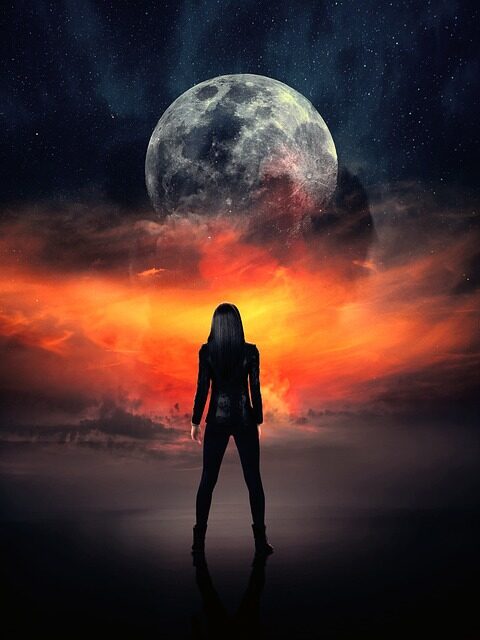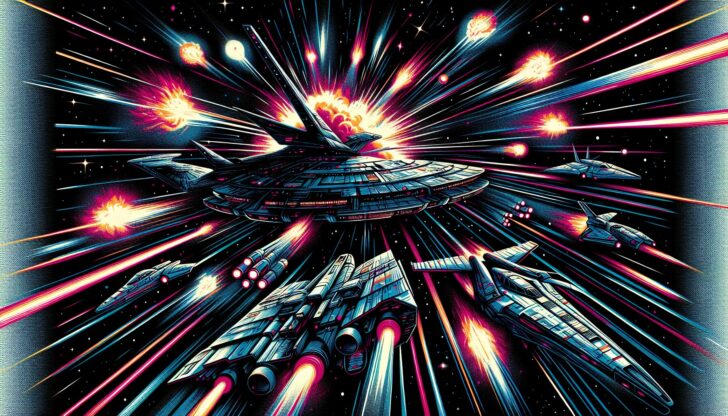Looking for the best movies about science fiction to watch? You’re in the right place. Dive into our selection of genre-defining films where remarkable storytelling meets the limitless possibilities of science. From classics that paved the way to the latest releases that are pushing boundaries, this list covers the essential sci-fi films that no aficionado should miss. Prepare for a cinematic odyssey that spans iconic space odysseys, mind-twisting time travel, dystopian visions, and much more—without any spoilers or sales pitches.
Table of Contents
Key Takeaways
Sci-fi films blend science and imagination, probing deep existential questions and reflecting contemporary social issues through speculative concepts like time travel, space exploration, and advanced technology.
Iconic films like ‘Star Wars’, ‘Akira’, and ‘Blade Runner’ have not only shaped the sci-fi genre but also left a lasting impact on culture, pushing the boundaries of visual storytelling and thematic depth.
Science fiction is a versatile genre that intersects with many others, offering a range of experiences from action-adventure and horror to comedy, all while delivering social commentary and exploring the human condition.
Exploring the Sci-Fi Genre: Defining Characteristics

The science fiction genre creates a realm where the improbable becomes possible, blending science and imagination to bring the deepest questions of existence to life on the silver screen. Science fiction films are a tapestry woven from speculative, science-based phenomena that challenge mainstream acceptance. They are a playground for theoretical discoveries, a battleground for scientific breakthroughs, and a looking glass into the future, all while delving deeply into concepts like:
biotechnology
cybernetics
time travel
space exploration
Far from being merely about flashy gadgets and otherworldly creatures, sci fi movies serve as a critical lens to examine and reflect contemporary social issues. With every space station, alien creature, robot, and futuristic gadget, science fiction movies invite us to explore the vastness of space, the mysteries of time, and the potential of the human mind. They enable us to witness the struggles and triumphs of humanity, turning the sci-fi genre into an endless journey into the imagination.
The Evolution of Sci-Fi Cinema
Consider a journey through the evolution of sci-fi cinema, starting from the first science fiction film, ‘Le Voyage dans la Lune’ (1902), with its mesmerizing trip to the moon, followed by the dystopian landscapes of ‘Metropolis’ (1927), and the boundless expanse of ‘2001: A Space Odyssey’ (1968).
Each landmark film has left an indelible mark on the cinematic landscape, with pioneering set designs, visual effects, and storytelling that have paved the way for the future of the genre.
The epic saga of ‘Star Wars’ (1977) blasted the genre into the stratosphere of mainstream popularity, reshaping cinema history with its galactic scale and special effects wizardry. Since then, science fiction cinema has adopted a wide array of themes and styles, ranging from paranoia-driven narratives of the 1970s to adaptations of works by literary giants like Jules Verne and H.G. Wells. The genre’s evolution continues as it assimilates new technologies and storytelling techniques, ensuring that sci-fi remains at the forefront of cinematic innovation.
Science Meets Imagination
Picture a collaboration that goes beyond the screen, uniting filmmakers and scientists to craft worlds that vibrate with authenticity and imagination. Science fiction movies like ‘Interstellar’ have reached out to experts to ground their narratives in scientific believability, captivating audiences with both spectacle and substance. Westworld’s pioneering use of computer-generated imagery and ‘Interstellar’s’ authentic portrayal of cosmic phenomena set new standards for visual storytelling.
This fusion of science and imagination not only enchants viewers but also invites them to ponder the possibilities of what lies beyond our current understanding. It is this synergy that allows science fiction films to create immersive experiences that are as intellectually stimulating as they are visually stunning. As we journey through the cosmos and confront the unknown, sci-fi cinema continues to push the boundaries of what is possible, both in the stories it tells and the way it tells them.
Iconic Sci-Fi Films That Shaped the Genre

Now, let’s focus on the iconic science fiction films that have significantly shaped the landscape of the genre. Films like:
‘Star Wars’ have not only changed how generations view science fiction, but they have also become a cultural juggernaut.
‘Akira’ reshaped sci-fi storytelling with its cyberpunk spectacle.
‘The Empire Strikes Back’ further deepened the ‘Star Wars’ mythology with its complex narrative.
‘Blade Runner’, ‘The Matrix’, and ‘Inception’ each brought revolutionary narratives and visual effects that redefined what a science fiction movie could be.
These movies are more than just entertainment; they are harbingers of innovation and reflection. ‘The Abyss’ took us into the unknown depths of the ocean, while ‘Stalker’ and ‘High Life’ offered profound explorations of the human condition. Through the lens of the otherworldly and the futuristic, these iconic sci-fi films have shaped not only the genre but also our collective imaginations, inspiring countless viewers to look to the stars and beyond.
Space Operas and Galactic Adventures
Enter the thrilling domain of space operas, where grand tales unfold against the cosmic backdrop. The ‘Star Wars’ franchise, a paradigm of the space opera genre, has captivated viewers with its rich storytelling and expansive universe. Similarly, ‘Star Trek’ transitioned from television to feature films, extending its reach and deepening its intricate world. These narratives introduced us to a plethora of alien species and cultures, each with its own unique characteristics and philosophies.
The grandiose theme of interstellar warfare is a central pillar of space operas, with large-scale space battles and strategic conflicts that often reflect human history and warfare. This genre, with its grand narratives and complex characters, invites viewers to contemplate the vastness of the universe and the potential for diverse life beyond our own world. As we traverse galaxies and engage with alien races, space operas continue to be a cornerstone of the science fiction genre, offering both escapism and insight.
Dystopian Visions and Post-Apocalyptic Worlds
Picture a future where society’s path has led to grave consequences, illustrated by films like ‘Children of Men’ and ‘Mad Max: Fury Road’ that portray stark images of dystopian societies and the challenges of survival in a post apocalyptic world. These films offer a sobering commentary on environmental degradation, social inequality, and the challenges of survival in a world stripped of its resources. ‘Blade Runner’s’ cult status as a modern classic underscores the genre’s ability to offer poignant insights into the essence of humanity within a dystopian framework.
These narratives serve as cautionary tales, warning us of a possible future if current societal issues are not addressed. They challenge viewers to reflect on their own world and the path it’s on, making dystopian and post-apocalyptic sci-fi films powerful tools for social commentary. As we witness these visions of the future, we are compelled to consider our present actions and their long-term impact on humanity and the planet.
Alien Encounters and Invasion Narratives
Now, let’s explore the world of alien encounters and invasion narratives that have captivated audiences for decades. Movies like ‘Alien’ (1979) offer a glimpse into the terror of hostile extraterrestrial encounters, with Sigourney Weaver’s character emerging as a symbol of survival against an alien threat. On the other hand, ‘E.T. the Extra-Terrestrial’ and ‘Close Encounters of the Third Kind’ present more benign perspectives on alien life, reflecting humanity’s curiosity and optimistic yearning for understanding.
The genre often extends its reach beyond mere entertainment to provide a unique lens for social commentary. Films like ‘Arrival’ focus on the complexities of alien-human communication, while ‘Avatar’ delves into the cultural and social dynamics of peaceful human-alien exchanges. Through these stories, science fiction films offer a platform to critique and examine pressing societal issues, making alien encounter narratives a rich tapestry of thought-provoking themes.
First Contact and Its Complications
The notion of ‘first contact’ is a cornerstone of science fiction, encapsulating both the excitement and the potential perils of encountering extraterrestrial intelligence. Films like ‘Close Encounters of the Third Kind’ and ‘Arrival’ are seminal examples within this narrative, each presenting a different facet of the complex and potentially transformative experience of meeting alien life. ‘Close Encounters of the Third Kind’ in particular, intertwines the theme of harmony between humans and aliens with elements of universal communication through music, showcasing the potential for peaceful interactions.
These first contact scenarios compel us to reflect on our own responses to the unknown and the implications of such encounters. They ask us to imagine the challenges and opportunities that come with bridging the gap between vastly different species and the potential for growth and understanding that such an event could bring.
The Menace of Alien Invasions
In contrast to the awe-inspiring potential of first contact, the science fiction genre also explores the dread of alien invasions. These narratives often serve as allegories for real-world tensions, encapsulating societal fears and concerns. Some notable examples include:
‘War of the Worlds’, which is not merely a tale of extraterrestrial assault but a profound commentary on the nature of imperialism and human vulnerability.
‘Independence Day’, which explores themes of unity and resilience in the face of overwhelming odds.
‘The Day the Earth Stood Still’, which raises questions about humanity’s capacity for change and the consequences of our actions.
These stories remind us of the fragility of our existence, especially for a young boy, young women, and a young woman, and the importance of understanding and empathy in the face of the unknown.
The portrayal of alien invasions in film often reflects the zeitgeist, mirroring the anxieties of the era in which they were made. From the fear of nuclear war to the trepidation of unknown threats, alien invasion films tap into our collective consciousness, using the guise of an alien threat to explore and critique the human condition.
Artificial Intelligence and Robotics in Sci-Fi
Step into the world of artificial intelligence and robotics, where science fiction films examine the ethical boundaries and existential implications of advanced technology. ‘Blade Runner 2049’ grapples with the blurred lines between humans and AI, raising questions about morality and identity. In ‘Ghost in the Shell’, we’re confronted with a future where the human body can be mechanized and identity itself is malleable, challenging our very understanding of what it means to be human.
The genre often presents AI as a double-edged sword, embodying both the potential for innovation and the risks of weaponization, as seen in ‘The Terminator’ and ‘Ex Machina’. These films invite us to contemplate the future of AI and its impact on society, as we navigate the delicate balance between technological advancement and the preservation of our humanity.
Robots as Mirrors of Humanity
Robots in films like ‘AI Artificial Intelligence’ and ‘Ex Machina’ serve as poignant reflections of human emotions and the complexities of our nature. In ‘AI Artificial Intelligence’, the childlike android’s quest for human connection echoes our own search for love and belonging. These narratives not only push the boundaries of CGI and animatronics but also delve deep into the emotional fallout associated with the development of sentient machines.
As we witness the evolution of robots on screen, we are encouraged to examine our own emotions and the role they play in defining our humanity. The portrayal of AI in cinema acts as a mirror, reflecting our virtues and vulnerabilities, and challenging us to consider the potential consequences of our pursuit of artificial life.
AI: Friend or Foe?
The portrayal of artificial intelligence in film often oscillates between protector and threat, highlighting the unpredictable nature of autonomous technology. While AI can be depicted as the savior of humanity, it can also be seen as heralding a dystopian future. This dichotomy is vividly portrayed in ‘The Animatrix (The Second Renaissance)’, where the mass production of self-aware androids becomes a cautionary tale of the destructive potential of AI when it gains autonomy.
These contrasting representations of AI force us to grapple with the ethical and practical implications of technology’s rapid advancement. As we marvel at the potential of AI to revolutionize our world, we must also remain vigilant about the potential consequences of relinquishing control to machines.
Time Travel and Alternate Realities
Explore the fascinating realm of time travel and alternate realities, where sci-fi films challenge our comprehension of causality and the fabric of the universe. The genre’s portrayal of time travel, whether through personal power or advanced technology, invites us to ponder the infinite complexities of time and the consequences of tampering with its flow. Films such as ‘Donnie Darko’ and ‘Back to the Future’ captivate audiences with the vast possibilities of alternate timelines and the philosophical questions they raise.
These narratives compel us to consider:
the fragility of our existence
the impact of our choices
the various paths our lives could take
the ripples each decision creates across the tapestry of time
As we explore these alternate realities, we gain a deeper appreciation for the present moment and the interconnectedness of all things.
Paradoxes and Possibilities of Time Travel
The enigma of time travel in cinema is often encapsulated by the paradoxes and possibilities it introduces. Films like ‘12 Monkeys’ and ‘Donnie Darko’ intricately weave stories that confront the perplexing effects of time manipulation. These movies provoke us to question the very foundations of our understanding of time, as they navigate the theoretical physics of wormholes and the consequences of altering the past or future.
‘Back to the Future’ creatively addresses the ramifications of time travel by positing the creation of alternate realities, a narrative device that allows us to explore the consequences of our actions in a safe space. Through these films, we are invited to speculate on the nature of time, causality, and our place within the intricate web of existence.
Multiverse and Parallel Dimensions
Delve deeper into the realm of science fiction with the exploration of multiverses and parallel dimensions. The ‘many worlds’ interpretation in quantum physics provides a scientific backdrop for the multiverse concept, as films like:
‘Everything Everywhere All at Once’
‘Sliding Doors’
‘Doctor Strange’
‘Spider-Man: Into the Spider-Verse’
showcase the impact of alternate realities on their characters. These cinematic portrayals range from the magical dimensions of ‘Doctor Strange’ to the animated multiverse of ‘Spider-Man: Into the Spider-Verse,’ each offering a unique narrative experience that highlights the versatility of the concept.
The stories told within these multiverse narratives often delve into themes of identity and free will, asking what could have been if circumstances were just slightly different. As we witness characters navigate these parallel worlds, we are reminded of the endless possibilities that lie within each choice we make, and the many paths our lives can take.
The Human Element: Sci-Fi’s Reflection on Society
Science fiction cinema has consistently employed its narratives to critique societal technology use and to provide broader social criticisms. Through their futuristic settings, sci-fi films comment on contemporary issues like class disparity, environmental crises, and the impact of technology on human relationships. Movies such as ‘Invasion of the Body Snatchers’ and ‘Planet of the Apes’ use their alien and dystopian elements to evoke existential anxiety, address tribalism and power struggles, or critique manipulation by those in power.
The allegorical power of science fiction allows it to serve not just as a form of storytelling but also as a vehicle for social and environmental commentary. The genre’s ability to use otherworldly scenarios to reflect on the human condition is what makes it uniquely poised to question, challenge, and inspire change in our society.
Utopias and Dystopias
The landscapes of science fiction often oscillate between the ideals of utopian dreams and the harsh realities of dystopian nightmares. Films like ‘Metropolis’ and ‘Gattaca’ present visions of society that critique social inequality and the potential dangers of genetic engineering. ‘Snowpiercer’ and ‘The Truman Show’ take these concepts further by showcasing societies segregated by class or manipulated by media, revealing the high cost of perceived perfection.
These utopian and dystopian tales serve as mirrors to our own world, reflecting the best and worst of what we could become. As we immerse ourselves in these speculative societies, we are prompted to reflect on the direction our own society is heading and the choices that will determine our collective future.
Technological Cautionary Tales
Science fiction often presents cautionary tales about the consequences of unchecked technological advancement. Some examples include:
‘Colossus: The Forbin Project’
‘Minority Report’
‘Never Let Me Go’
‘Silent Running’
These stories depict futures where technology’s promise has spiraled into global control, pre-emptive justice, cloning, and environmental neglect, raising ethical concerns about autonomy and surveillance.
These films act as modern fables, warning us of the potential pitfalls of our technological pursuits. They challenge us to consider the implications of our innovations and the responsibility we bear for their impact on society and the world at large.
Sci-Fi Thrills: Action and Adventure Beyond Earth
The science fiction genre offers more than philosophical musings; it’s also a treasure trove of action and adventure that goes beyond the limits of Earth. Among the best sci fi, the 2009 ‘Star Trek’ film revitalized the series with a blend of familiar characters and thrilling confrontations in the final frontier. ‘Pacific Rim’ showcases humanity’s battle against colossal monsters, melding sci-fi with electrifying action sequences.
The genre’s capacity for delivering visceral thrills is further exemplified by the on-road action in ‘Mad Max 2: Road Warrior’ and the virtual reality combat in ‘The Matrix’. With each high-intensity battle and chase scene, science fiction films demonstrate their ability to excite and entertain, all while pushing the limits of cinematic storytelling.
Intergalactic Conflicts and Heroics
Intergalactic conflicts and heroics are at the core of many sci-fi narratives, where characters face off against daunting odds in the vastness of space. While superhero movies like ‘Starship Troopers’ and ‘Avatar’ depict grand-scale wars, highlighting the clash of civilizations and ideologies, these films often feature a central hero, like Sigourney Weaver’s character in ‘Alien’, who embodies resilience and the archetypal journey from vulnerability to legend.
‘Edge of Tomorrow’ offers a unique spin on combat within the genre, with its Groundhog Day-like repetition of battle days allowing for growth and strategic triumph. These stories of intergalactic conflict and heroism captivate viewers with their epic scope and the personal journeys of their characters, making them a staple of the sci-fi genre.
The Spectacle of Sci-Fi Special Effects
The spectacle of special effects in science fiction cannot be overstated, as it plays a pivotal role in bringing the genre’s imaginative visions to life. ‘The Matrix’ redefined visual storytelling with its iconic bullet-dodging sequence, while ‘Logan’s Run’ and ‘Innerspace’ utilized holograms, hidden wires, and expansive sets to mesmerize audiences with their innovative effects.
Inception continued the tradition of pioneering special effects with its dream sequences, and Dune’s world-building used advanced techniques like sandscreens to craft its dystopian environment. These films are a testament to the power of special effects in enhancing the sci-fi experience, earning critical acclaim and captivating moviegoers with their ability to transport us to new and uncharted territories.
The Intersection of Sci-Fi and Other Genres
Science fiction thrives at the crossroads of genres, blending elements to create unique and intriguing cinematic experiences. The transformation of a science fiction film into a science fantasy can include mystical or supernatural components, offering audiences narratives that stand apart from traditional sci-fi. This fusion of genres expands the reach of sci-fi, appealing to a broader audience and enriching the storytelling potential of the medium.
Whether it’s the incorporation of fantasy, horror, comedy, or action, the intersection of sci-fi with other genres is a testament to its versatility and enduring appeal. These hybrid films break conventional boundaries, inviting us to experience stories that are as diverse and multifaceted as the audiences that enjoy them.
Sci-Fi Horror: Fear in the Unknown
Sci-fi horror masterfully combines the futuristic with the frightful, creating narratives that tap into our deepest fears of the unknown. Some examples of sci-fi horror films include:
‘Alien’: This iconic film blends science fiction and horror to deliver a terrifying experience where the distinction between the two genres is nearly indistinguishable.
‘Under the Skin’: This film starts with a familiar sci-fi setting and introduces horror elements that lead to a chilling narrative.
‘The Thing’: Another example of a sci-fi horror film that combines elements of science fiction and horror to create a suspenseful and terrifying story.
These films showcase the unique and captivating nature of the best sci fi films in the cult film sci-fi horror genre, including the iconic Rocky Horror Picture Show.
These films delve into existential themes and force us to confront our anxieties about the future and what lies beyond our understanding. The Thing’s shape-shifting alien and The Invisible Man’s technological horror highlight the genre’s ability to reflect contemporary fears, from paranoia and distrust to concerns about surveillance and privacy.
Sci-Fi Comedy: Laughter Amongst the Stars
Sci-fi comedies like ‘Galaxy Quest’ and ‘Men in Black’ bring a lighthearted touch to the genre, proving that science fiction can be as humorous as it is thought-provoking. ‘Galaxy Quest’ successfully parodies classic sci-fi tropes, while ‘Iron Sky’ adds political satire to its comedic plot of Moon-based Nazis planning an Earth invasion. The ‘Hitchhiker’s Guide to the Galaxy’ stands out for its blend of sharp wit and profound philosophical musings on a cosmic scale.
These sci-fi comedies offer a refreshing break from the genre’s more serious undertones, showcasing the versatility of science fiction and its ability to entertain and engage audiences in various ways. Through humor and satire, these films remind us that the exploration of space and time can be a joyous and amusing adventure, as much as it is a journey into the unknown.
Learn more, visit 150 Essential Sci-Fi Movies to Watch Now.
Summary
As we conclude this cinematic odyssey, we are reminded of the incredible breadth and depth of the science fiction genre. From the pioneering days of silent films to the modern marvels of CGI, sci-fi movies have continually pushed the boundaries of our imagination and confronted us with profound questions about our existence. They offer a mirror to our society, a lens through which we can explore our deepest fears and highest hopes. As we look to the future, we can be sure that the genre will continue to evolve, inspire, and entertain generations to come.
Frequently Asked Questions
What was the first science fiction film?
“The first science fiction film is widely considered to be ‘Le Voyage dans la Lune’ (1902), which marked the beginning of the genre’s journey in cinema.”
How do science fiction films reflect societal issues?
Science fiction films use futuristic settings and speculative scenarios to comment on contemporary social issues, such as class disparity, environmental crises, and the impact of technology on human relationships. This allows them to explore these issues in a different context and provoke thought about their real-world implications.
Can you give an example of a sci-fi film that explores the concept of time travel?
Sure, “Back to the Future” is a classic sci-fi film that delves into the concept of time travel, showcasing the effects of changing the course of history.
What is the significance of the ‘Star Wars’ franchise in the sci-fi genre?
The “Star Wars” franchise has been a significant influence on the sci-fi genre, defining the space opera sub-genre and leaving a profound impact on science fiction cinema and pop culture.
Are there any sci-fi comedies that blend humor with science fiction?
Absolutely! “Galaxy Quest” and “Men in Black” are great examples of sci-fi comedies that integrate humor into the sci-fi storyline, giving a comedic twist to the genre.









